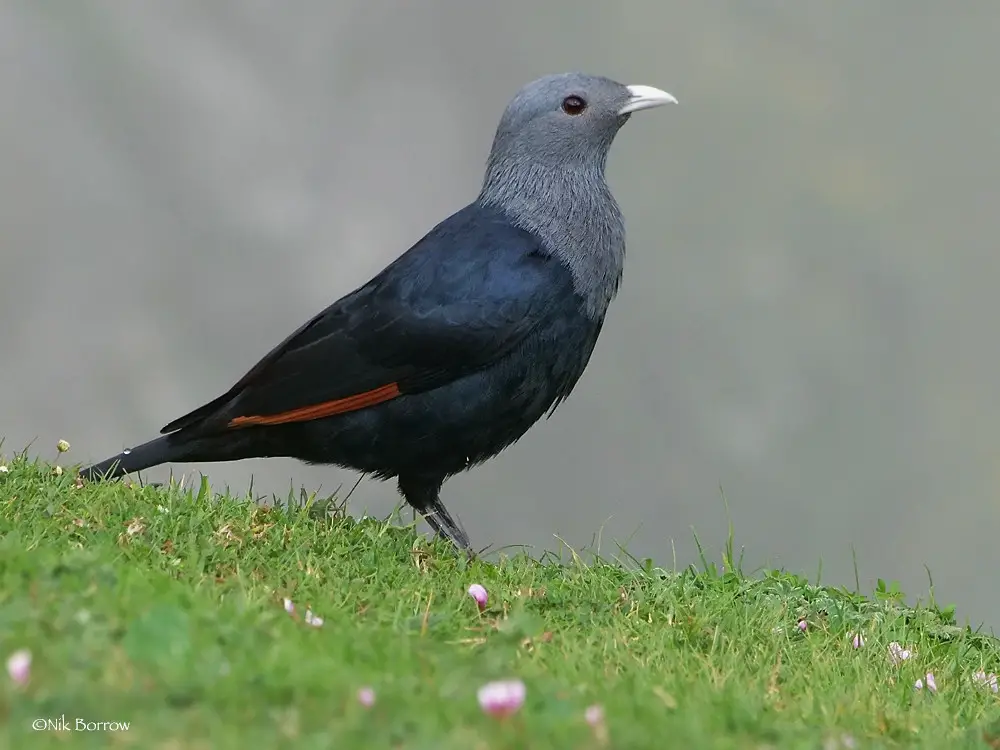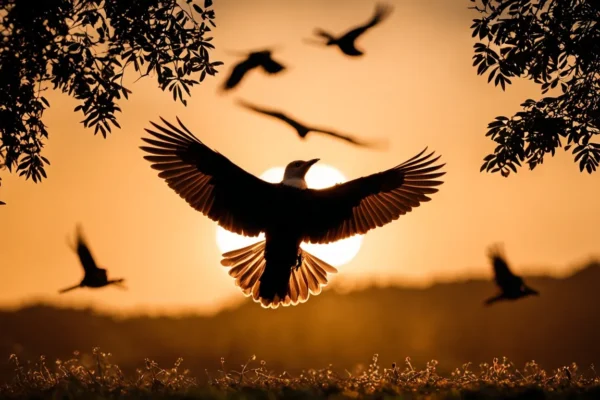Birds are amazing creatures with all kinds of colors and patterns on their feathers. Some birds, though, have a special and interesting look: they have black bodies and gray heads. These birds are quite unique and catch our attention with their striking appearance.
In this blog post, we’re going to take a closer look at these black birds with gray heads. We’ll learn what makes them special, where they live, and what they like to eat. So, get ready to explore the world of these intriguing birds with us!
Types of Black Birds with Gray Heads
- Western jackdaw
- White-billed Starling
- Black Vulture
- Brewer’s blackbird female
Western Jackdaw

- Scientific name: Corvus monedula
- Lifespan: Approximately 5 to 15 years
- Wingspan: About 67 to 84 cm (26.4 to 33.1 inches)
- Native to: Western and Central Europe, North Africa, and parts of Western Asia.
The Western Jackdaw also known simply as the Jackdaw, is a small and intelligent corvid bird found in various parts of Europe and western Asia. Adult Western Jackdaws have a distinctive appearance with predominantly dark gray to black plumage, a pale gray nape, and pale gray eyes. They also have a small black cap on their heads, which distinguishes them from other corvids.
These jackdaws are highly adaptable and can be found in a wide range of habitats, including urban areas, farmlands, woodlands, and cliffs. They have a diverse diet, which includes seeds, insects, small vertebrates, and human food scraps.
Western Jackdaws are known for their sociable behavior and are often seen in flocks. They are appreciated for their intelligence and problem-solving abilities, making them intriguing subjects for scientific research and birdwatching.
White-billed Starling

- Scientific name: Onychognathus albirostris
- Lifespan: About 5-7 years
- Size: 8-9 inches (20-23 cm) in length
- Origin: Native to eastern and southern Africa
The White-billed Starling is an enchanting bird species native to certain regions in Africa.
These Starlings have a captivating appearance with predominantly glossy black plumage, which often has a purplish or bluish iridescence in the right light. The females have a gray head and black body. Their most distinctive feature is their white beak, which contrasts beautifully with their dark feathers. This white beak gives them their common name.
These starlings are typically found in rocky and mountainous terrain, often in hilly and upland areas. They are known for their preference for cliffs, gorges, and rocky outcrops. Their choice of habitat provides them with nesting sites and roosting areas.
White-billed Starlings are social birds, often seen in small groups or pairs. They are agile climbers and adept at navigating the rocky landscapes they call home. They feed on a diet consisting of insects and various invertebrates, which they forage for among the rocks and cliffs.
These starlings construct cup-shaped nests in the crevices and ledges of cliffs. They lay their eggs in these well-protected locations. The rocky terrain serves as a safe haven for their nests, helping to shield their young from potential predators.
Brewer’s Blackbird (Female)

- Scientific name: Euphagus cyanocephalus
- Lifespan: Typically around 3 to 4 years
- Wingspan: Approximately 34 to 41 cm (13.4 to 16.1 inches)
- Native to: Western North America, particularly in areas from Canada to Mexico.
The Brewer’s Blackbird is a medium-sized blackbird species native to North America, primarily in the western parts of the continent. Adult male Brewer’s Blackbirds are known for their glossy black plumage and striking yellow eyes. Females, on the other hand, have a more subdued appearance.
Female Brewer’s Blackbirds typically have brownish-gray plumage with subtle streaking on their underparts. Their eyes are less vividly colored than those of the males, and they lack the glossy black plumage. Female Brewer’s Blackbirds may also have a slightly lighter throat and breast compared to males.
These blackbirds are often found in a variety of habitats, including grasslands, open woodlands, and urban areas. They primarily feed on a diet of seeds, insects, and small invertebrates.
Brewer’s Blackbirds are appreciated for their adaptability to human-altered landscapes and are commonly seen in parks, parking lots, and agricultural fields. The females, though less striking in appearance than the males, play an essential role in the species’ reproduction and survival.
Black Vulture

- Scientific name: Coragyps atratus
- Lifespan: Around 20-25 years
- Size: 25-27 inches (63-68 cm) in length, wingspan of 60-70 inches (152-178 cm)
- Origin: Native to the Americas, including North and South America.
The Black Vulture (*Coragyps atratus*) is a large scavenging bird found in the Americas, primarily in the southeastern United States, Central America, and parts of South America. Adult Black Vultures have a distinctive appearance with predominantly black plumage, a featherless gray or black head, and a short, hooked beak.
These vultures are often associated with carrion consumption and are highly efficient scavengers. They feed on a diet of carrion, including the remains of mammals, birds, and other animals. They are often seen soaring in the sky or perching near roadkill and other sources of carrion.
Black Vultures are appreciated for their important ecological role in cleaning up and recycling animal carcasses in their habitats. They are often seen in groups, called “kettles,” and their presence is an iconic sight in many parts of their range.
Final Thoughts on Black Birds with Gray Heads
As we wrap up our exploration of the avian world, one thing becomes abundantly clear: nature is a never-ending source of wonder and surprise. These black birds with their gray heads stand as a testament to the incredible diversity of life that surrounds us.
Through our journey, we’ve unearthed the beauty in simplicity, appreciating how the combination of black and gray in these birds creates a unique and captivating charm. We’ve also learned about their habitats, behaviors, and diets, gaining a deeper understanding of the role they play in our ecosystems.






One thought on “4 Astonishing Black Birds with Gray Heads”